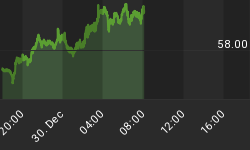Two weeks ago, America's largest smartphone maker, Apple Inc. (NASDAQ:AAPL), announced a 4-for-1 stock split that will be executed at the end of August. Apple said it pulled off the move "...to attract new investors" shortly after delivering a blowout quarter where its iPhone sales of $26.4 billion bested analysts' expectations by $4 billion.
Perhaps not exactly by coincidence, two days ago, leading EV manufacturer, Tesla Inc. (NASDAQ:TSLA), also announced that its board had approved a five-for-one split of its shares "...to make stock ownership more accessible to employees and investors". Tesla shares will be split on August 21.
And now Wall Street believes that the highly unusual move by two tech heavyweights to split their shares within weeks of each other could lead to other tech giants heading down this path, especially given the parabolic rally in tech/EV names over the past few months.
Apple and Tesla are enjoying their best runs in a decade, with AAPL up 126% in the year-to-date while TSLA has rallied a staggering 580% over a similar timeframe.
Why Split?
A stock split is a decision by a company's board of directors to issue additional shares by issuing additional shares to existing shareholders. The most common split ratios are 2-for-1 and 3-for-1, which means that shareholders get two or three shares, respectively, for every share held. Much higher ratios are by no means uncommon though, such as MasterCard Inc.'s (NYSE:MA) 10-for-1 split in 2014 and Apple's 7-for-1 split also in the same year.
Unlike the process of creating new shares by issuing dilutive secondary shares, a stock split is a pretty straightforward process because the share price decreases in the same proportion that the number of shares outstanding increases, thus leaving the market cap unchanged.
In the case of Apple, each investor will receive three additional shares for each share that they hold whereas Tesla shareholders will get four additional ones for each share in their possession. Apple's new share price will, therefore, be 25% of the price before the split while Tesla's new share price will be 20% of the pre-split price.
As both Apple and Tesla have pointed out, the biggest reason why companies occasionally decide to split their shares is to make them cheaper and more affordable, especially to retail investors. Companies sometimes do stock splits whenever they feel the share price has become too expensive and unaffordable for the average investor. Splitting also improves a stock's liquidity by making it more accessible to a broader range of investors.
For instance, at the time of this publication, AAPL was trading at $458.98 per share, while TSLA has become one of the most expensive shares on the market with a single share changing hands at $1,638.01.
But even Tesla has nothing on Berkshire Hathaway Class A shares (NYSE: BRK.A) which are currently quoted at $318,830.06 -a-pop thanks to the company never having split the stock since it went public in the early 1960s.
In comparison, without periodically splitting its stock, an original Apple share would be worth 56 shares today, meaning its share price would be higher by a factor of 56, or $25,702.88 per share.
One caveat: Although splitting Apple shares will be neutral for shareholders, it will dramatically change its place in the Dow Jones by knocking it from its pedestal as the most influential stock in the benchmark to somewhere in the middle of the pack. That's because the Dow uses the old-fashioned and anachronistic price-weighting mechanism where share price determines the weighting of stocks in the index. Tesla, of course, doesn't have to worry about such issues.
Stock splits have, however, become increasingly less common over the years.
In the past, stock splits used to be a favorite way for companies to chase a target price range for their shares. For instance, in the mid-1980s, it was not uncommon for roughly one-fifth of S&P 500 stocks to split in a given year. But stock splits have become increasingly rare, partly because corporations increasingly prefer to manage the value, not price, of their shares and also due to the growing popularity of fractional stock trading.
Fractional Trading
Nowadays, numerous brokers including Robinhood, Charles Schwab, Interactive Brokers and Fidelity among others allow investors to buy fractions of shares, though the main exchanges still do not. Related: Precious Metals Bulls Are Not Done Yet
For instance, Apple and Tesla are some of the most popular stocks on Robinhood, with Apple ranking as the most popular stock on the zero-fee trading app over the last 30 days while Tesla is ranked #4 as per Robintrack. If you only own full stocks in both companies, it's easy to calculate how your portfolio will look like after the split.
However, things get a bit more convoluted for investors with fractional shares because different brokers treat this class of shares differently after a stock split.
Some brokers split both full and fractional shares while others will sell your fractional shares ahead of the split and deposit the money back into your account. Robinhood belongs to the former group. In this case, a Robinhood investor who owns, say, 0.1 of a share in Apple would receive 0.4 of a share still worth ~$45.89 after the split whereas a Tesla shareholder would receive 0.5 of a share that is still worth ~$163.80.
Cash App is another broker that also splits fractional shares.
The good part: If your brokerage liquidates your fractional shares before the split, it should still be simple enough to buy them back after the split.
We advise investors who own fractional shares to contact their brokerages before the splits.
By Alex Kimani
More Top Reads From Safehaven.com:

















